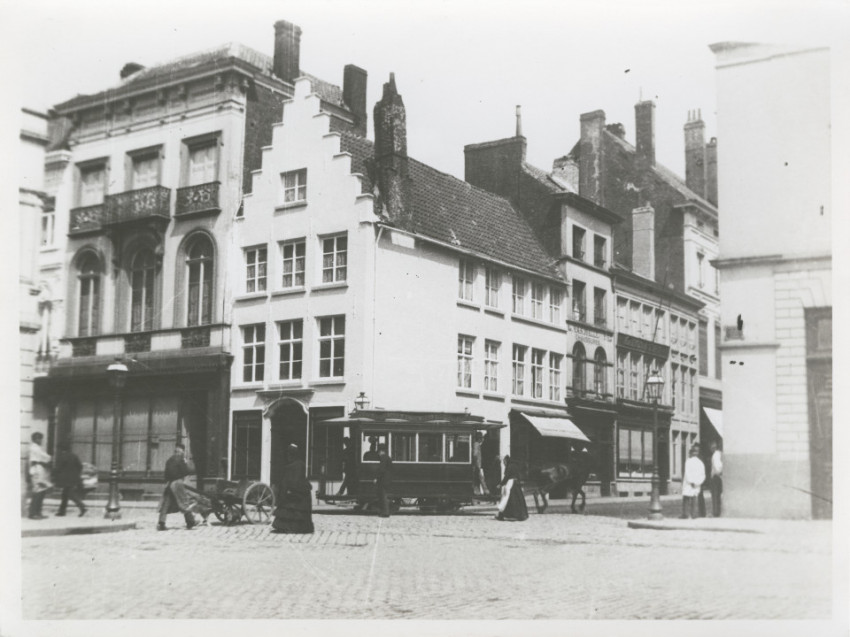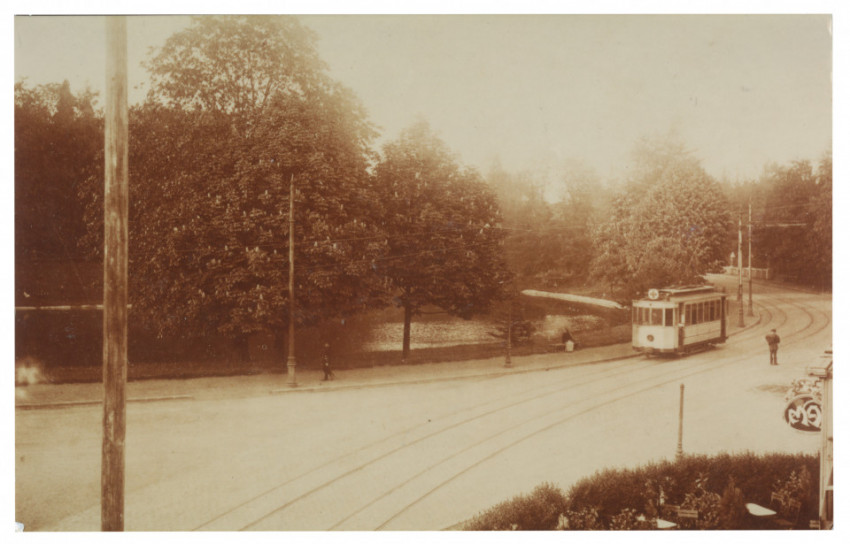
24th of may 1874
In 1832, the very first horse-drawn tramcars rattled through the streets of New York. It took almost half a century before Ghent also introduced its first horse tram network, operating between Ghent-Zuid and Dampoort. Prior to this, public transportation relied on diligences, essentially horse-drawn coaches.

1899

1904
The groundbreaking technology of the battery-powered trams did not meet expectations. Therefore, the Electric Tramways of Ghent (ETG) switched to power supply via overhead lines. The tram cars now drew power from the overhead wire using a trolley pole.

The World Exhibition in 1913
In preparation for the 1913 World Exhibition, the Ghent tram network was specially adapted for the organization of the international event. Three special exhibition lines attracted the majority of the passengers, and a series of new carriages, including the open summer wagons, were used to transport the visitors.

The First World War
The First World War dealt a blow to the Ghent tram network. Copper cables from the overhead lines were replaced by the German occupiers with iron wires, leading to frequent cable breaks. Just before the Armistice, the German military engineers blew up dozens of bridges, severely disrupting tram and train traffic.

The Second World War
Twice, the Ghent tram network bore the brunt of the conflict. During the German invasion, Belgian engineer troops blew up several bridges, including the Terplaten Bridge, in an attempt to delay the German advance. However, their efforts were in vain. The destroyed bridges were replaced with temporary structures, which were then blown up by the retreating German army in September 1944.

The shrinking of the Ghent city network
Due to the increase in the number of cars and the decline in the number of passengers, the tram network suffered in the 1960s. Of the 11 city lines, only four remained by the early 1970s. Even the neighborhood tram network disappeared completely.

A Ghent metro?
Following the example of Antwerp, Charleroi, and Liège, the MIVG (Municipal Transport Company of Ghent) floated the idea in the 1960s of constructing tram line 1 underground or in the bed of the River Leie. However, the plans for the pre-metro line were never implemented in Ghent.

Regional and urban transportation combined in De Lijn
In 1991, the Flemish Transport Company De Lijn was launched, merging the Antwerp M.I.V.A, the Gent M.I.V.G., and the local tramways.

New millennium, new tracks, new trams
In 2000, the brand new articulated low-floor trams, nicknamed 'Hermelijns,' were introduced, later followed by the 'supertrams,' the Albatrosses. The tram network was further expanded to Flanders Expo, the UZ Gent, and the center of Zwijnaarde.

